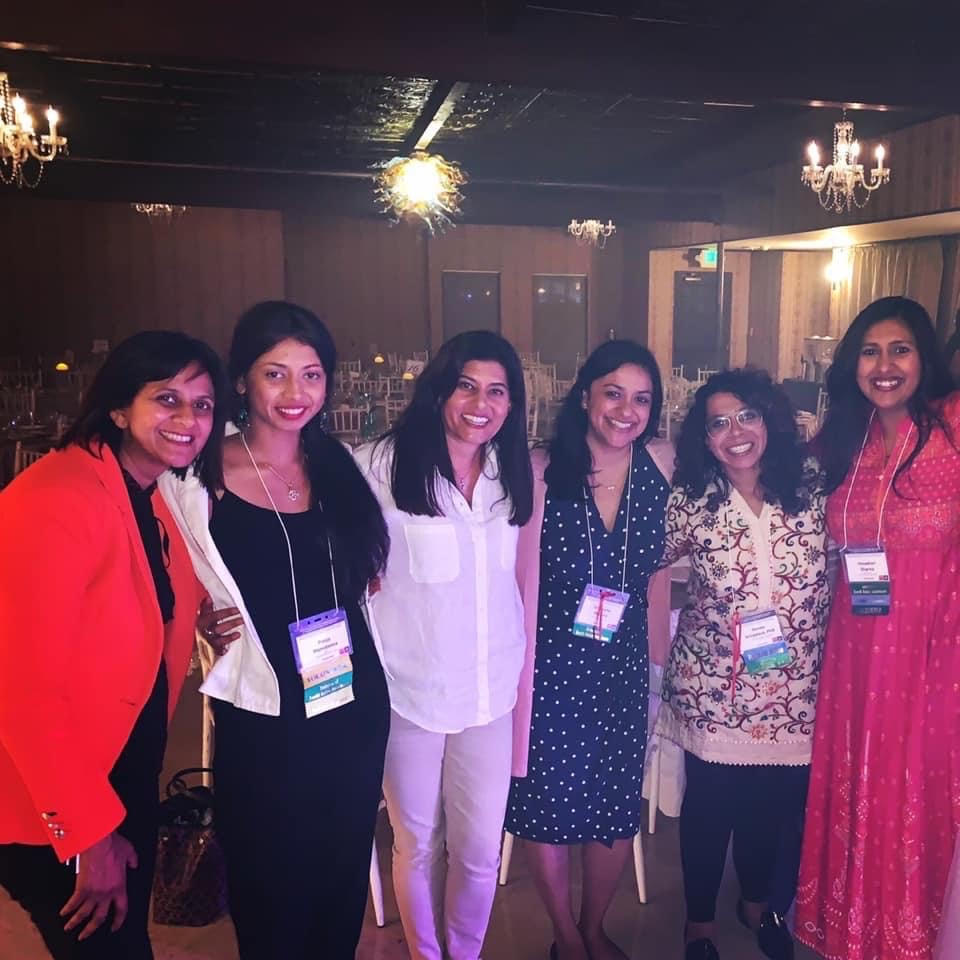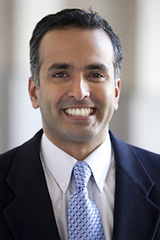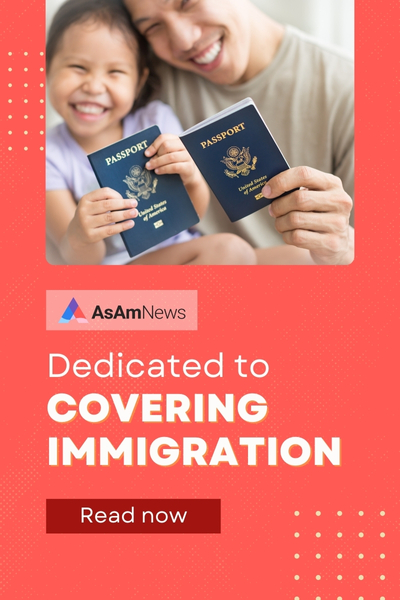By Shruti Rajkumar, AsAmNews Intern
Marriage and family therapist Ulash Dunlap has always considered herself a part of the Asian community, especially having grown up in the United Kingdom where there was a large South Asian community. But when she came to the United States, she was surprised to find out that some people didn’t perceive her that way.
“When you’re born and raised in a country where everyone’s told you [that] you’re Asian, and then you come to a country, and even Asian people are telling you ‘No, you’re not Asian’…it was really hard for me in terms of my identity to do my own work. It very much is this battle of who I am and and who everybody else is telling me outside who I am,” Dunlap said.
The Census Bureau defines an Asian person as “having origins in any of the original peoples of the Far East, Southeast Asia, or the Indian subcontinent including, for example, Cambodia, China, India, Japan, Korea, Malaysia, Pakistan, the Philippine Islands, Thailand, and Vietnam.” Despite this, Indian Americans as well as other South Asian Americans are often disconnected from the Asian American community and identity.
According to a 2016 National Asian American Survey, 42% of White people reported that Indians are not likely to be Asian, while most White people reported that Chinese, Korean, and Japanese people are Asian or Asian American. In addition, 15% of Asian Americans believed Indians are “not likely to be” Asian or Asian American.
Director of AAPI Data Karthick Ramakrishnan said that the image of who counts as Asian is predominately East Asian due to historical patterns, as well as the biases and representations that flow out of them. Early waves of migration in the United States were predominantly Chinese and Japanese. These communities constituted the vast majority of Asian Americans until the 1960s, which only began to shift in the 1970s due to the Southeast Asian refugee crisis, said Ramakrishnan.
“Populations that tend to be around longer tend to be more likely to be represented in the media [and] in political office. But it is important for us to update our understanding. Indians are now the largest Asian American group in this country. But we are far from the day when Indian Americans are considered fully Asian American, the way that East Asians are considered Asian American,” Ramakrishnan said.
Dunlap said that the perception of Indian and South Asian Americans as Asian, as well as how they identify themselves, is really complex. She said it isn’t true that all East Asians perceive them as non-Asian. In fact, some Indian and South Asians don’t identify themselves as a part of the Asian American community.
Clinical psychologist Dr. Helen Hsu said that although she considers Indian and South Asian Americans as part of the Asian American community, she knows that not everyone feels the same way. She notes that while there has been a lot of Asian American solidarity and activism happening, some Asian Americans prefer to identify within their specific ethic group, while others don’t even want to be affiliated with the Asian American identity.
“One thing that I’ve adapted in these last few years as more people are talking about lack of inclusion in Asian American spaces is how does a person self-identify? If they do not see themselves as Asian American, I’m not gonna be like, ‘Oh, yes, you are.’ When they want to be included in the API umbrella, I am happy to have them and I welcome them. But for those who don’t feel like that describes them, I feel like we have to go with how people self-identify,” said Hsu.
The perception that Indian and South Asian Americans aren’t Asian is perpetuated by the strong focus on East Asians in articles, research, and literature, said Dunlap. Ramakrishnan said that with the anti-Asian hate that’s been happening over the past year, the media has fixated on what’s been happening to East Asians and not as much with South Asians.
“For example, with the killings of four Sikh individuals in that FedEx facility, it registered some level of attention for a couple of days, and then it just went away. And more generally, not just South Asians, but Sikhs in particular, who’ve been targeted and killed in the dozens since 9-11, there has not been much in the way of sustained attention or concern in the larger Asian American community,” Ramakrishnan said.
Ramakrishnan notes the importance of opportunities for South Asian voices in order to give as much equity as possible to different communities within the Asian American umbrella. Today, there is more Indian and South Asian Americans representation within politics and news media, such as Deputy Assistant Attorney General of the United States Juanita Cooke, Vice President Kamala Harris, and PBS broadcast journalist Hari Sreenivasan.
“But that’s not the only thing that matters. In people’s minds, it’s not just to know that those individuals exist, but do you consider them to be Asian? That’s still gonna take a while. South Asians are the fastest growing segment of the population. These facts matter, but people still are frozen in time in terms of their understanding about the Asian American community, and so they need to update their understanding with the latest facts,” Ramakrishnan said.

Last year, at the beginning of the pandemic, the Asian American Psychological Association collaborated with the American Psychological Association to create a series of public service announcements consisting of videos to help AAPI families talk to their kids about COVID-19 related bullying and harassment. Dunlap said the videos included herself as well as Chinese American and a Japanese American talking about these issues, which shows representation and collaboration within the Asian American community.
“Representation is important. If we don’t see people like ourselves, then we think it’s not our problem. When people then see this video, and they see us and hear different voices, I think that really shows that we are a community and we are collaborating to support each other,” Dunlap said.
Hsu said that within the Asian American community, the nuances and needs of specific communities deserve different kinds of attention. However, she said that the pros of Asian Americans being more aligned with one another and being more inclusive is that there is a bigger impact.
“We have some issues that do overlap enough, but I feel we are often in alignment about what our community’s needs are, and then we’re able to have way more impact when we are in coalition. And yet, I think it’s absolutely crucial that things like the data be disaggregated, because we just lose the nuances of what each community really needs,” Hsu said.
Dunlap said that it’s important that we break the perceptions of who we define as Asian so that we can form allyships. Additionally, she said we need to empower our own racial and ethnic identity.
“If [I haven’t] worked on [my] own identity, I could actually end up doing more harm, because I don’t understand what my Chinese American brothers and sisters need [and what] my Cambodian American brothers and sisters need. If I’ve made a connection to [someone] who identifies as Cambodian American, and I’m not excluding [them] from the conversation, we’ve created inclusion together. We can start really small first, learning to understand each other,” Dunlap said.
AsAmNews has Asian America in its heart. We’re an all-volunteer effort of dedicated staff and interns. Check out our new Instagram account. Go to our Twitter feed and Facebook page for more content. Please consider interning, joining our staff, or submitting a story or making a contribution.





As much as I love Indians, linguistically, genetically, and physiognomically, they are more closely related to Europeans than East Asians. Their language is called an Indo-European language. (see “Modern DNA reveals ancient origins of Indian population: The latest findings suggest Europeans and Indians share a common ancestor. “https://www.upi.com/Science_News/2017/05/08/Modern-DNA-reveals-ancient-origins-of-Indian-population/6721494272565/”).
South Asians do not share much as far as culture, language, history, or DNA with the people of Far East Asia, like Japan, Korea, and China. The Chinese language does not play any role in their literature. Confucianism never figured in their culture. Reading their history, the people from the Middle East and India have the most in common in their language, culture, migrations, history, and their people. From Alexander the Great through Muslim conquests, India shares much of their experiences with the people from the Middle East. Perhaps a new designation should be given to this region: IndoStan? (Most of the countries in this region have names that end in Stan, like Pakistan, Afghanistan, Turkmenistan, Iran, etc.)
Are South Asians disconnected from (East) Asian Americans? Were they targeted during this past year+ from SinoPhobia racism? Were South Asians abused, harassed, harmed, murdered because they look Chinese? Were South Asian businesses in America robbed, trashed, or destroyed during the virulent SinoPhobia hate-filled expressions by so many racists? Were South Asians spit upon, attacked, cursed at, and told to go back to China in this Corona Virus fear environment? It was good that South Asians were disconnected from the outburst of hatred toward people who look Chinese; I would not wish this abuse and evil on anyone.
I guess Europeans and even West Asians will cringe if they are told that South Asians are related to them, given the variety of skin color we South Asians possess which may range from swarthy in the North to downright black in the Deep South. In truth, we are most closely related to the original Dark-skinned Asians, whose vestiges are still found among Australian Aborigines, and native tribes of the Andamans, Solomon islands, Papua New Guinea, Fiji et al. We inherited a certain amount of “European-like” genetics due to successive invasions from the North-West : the Aryans, the Scythians and finally, the Muslim Turko-Afghans.
And I haven’t even mentioned Indians of the North-East who are often physically indistinguishable from East Asians! I feel sorry for them because they are likely to be the most confusing example in this “Asian or Indian” debate.
In truth, India is an ethnological museum : the Oldest simmering Melting Pot of Humanity.
MeghDiip you mention about north east indians, but you are just repeating what she says. By the way, I spoke with indians both irl and online about this topic.
Many indians online whom live in India explained me the racism that North East indians experiences on daily basis and are even called “chinese” but in a degratory/offensive way due to their distinct phenotype due to their East/South East asian ancestry.
But the most important fact is they account for only 1% of India’s population, which don’t represent the majority whom mostly don’t have EA/SEA ancestry.
What I’ve noticed for the past few years during the rise of softpower of East Asian media like anime, kpop and such is the fact that more and more desi people(someone who’s ancestry mainly from India, Pakistan and Bengladesh) wants to associate themselves with those whom are phenotypically asian(EA/SEA) and say how similar this and that. Ancient China and Europe influenced and had cultural exchange for more than 1000 years. But the thing you have to keep in mind is: the fact that I’m influencing you or vice versa doesn’t mean we are the same person (or in this case, people).
MeghDiip: You are iterating my point. Indians do not have much in common with East Asians other than being put into one category by Europeans: Asia. Geographically, Indians have more in common with most of the Middle Easterners situated in the Asia continent. Even the cradle of Indian civilization- the Indus River- is in present day Pakistan. Indians have lived with, amongst, and amidst Pakistanis and Afghanis (and other Middle Easterners) through invasions, food eaten, shared experiences, etc. for centuries; or millennia? Physiognomically, lingustically, culturally, genetically… Indians, Pakistanis, Afghanis, etc. is a uniquely different group of people than Europeans and East Asians. This region should be its own continent and have its own designation: IndoStan. I think most people will almost immediately know where this region is if we say the continent of IndoStan.
[…] race has become more inclusive. The terms of racial identification too are evolving which indicates each community’s vibrant consciousness and awareness about their presence in American […]